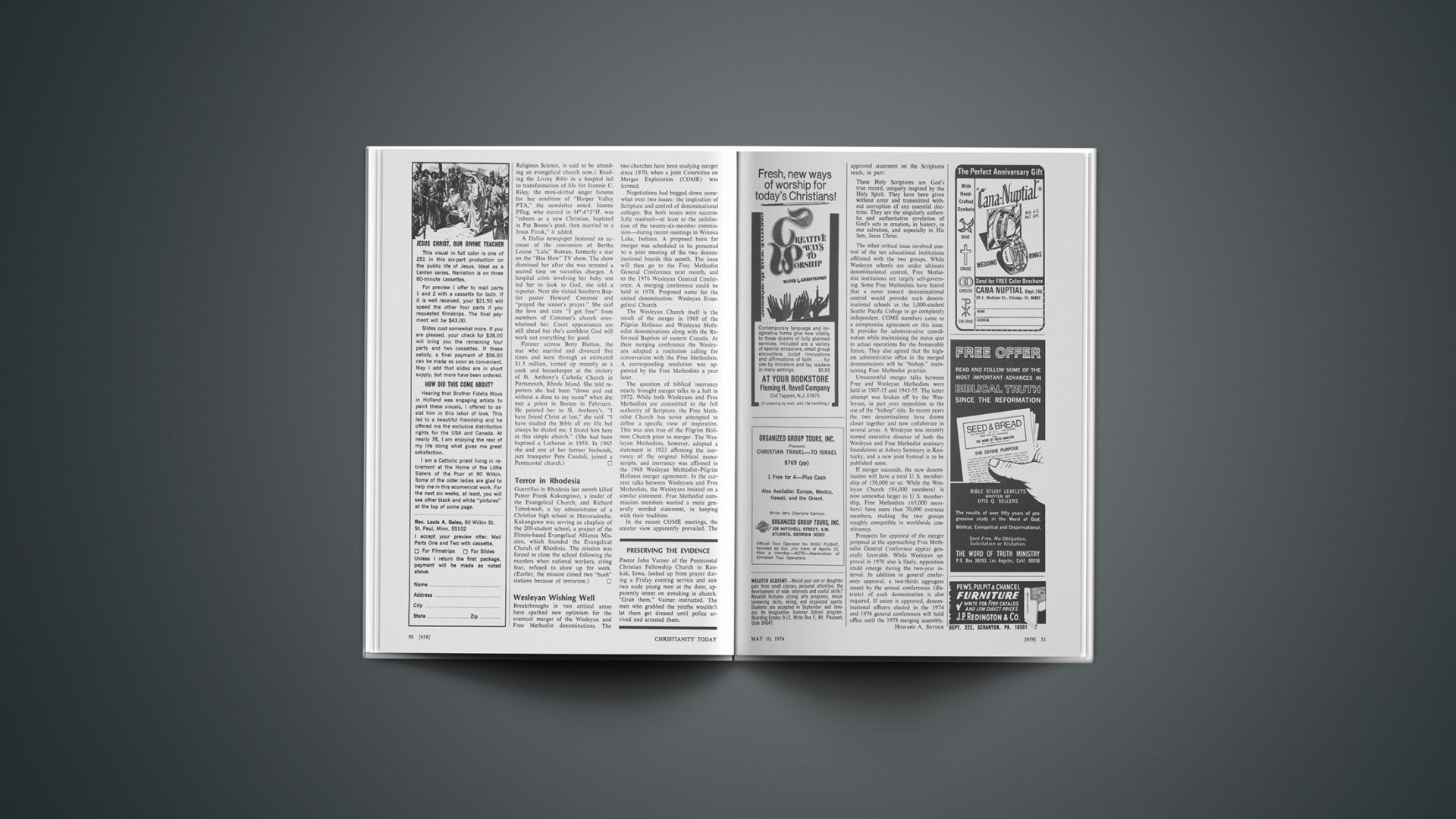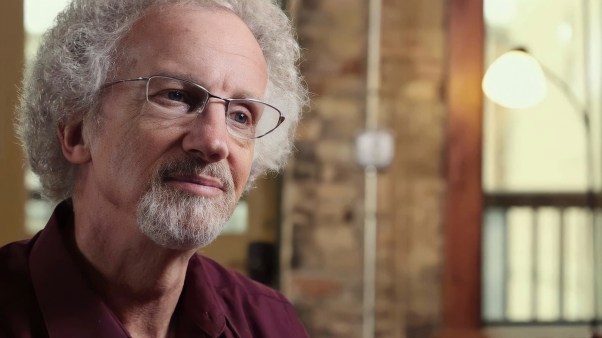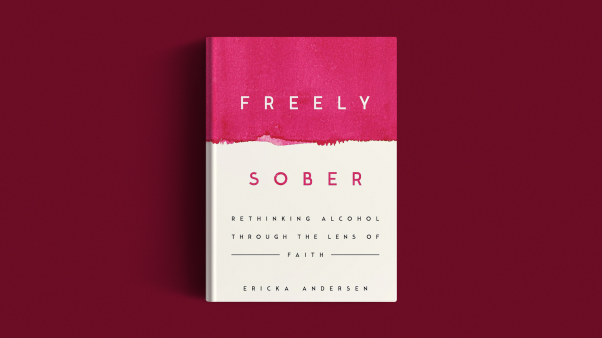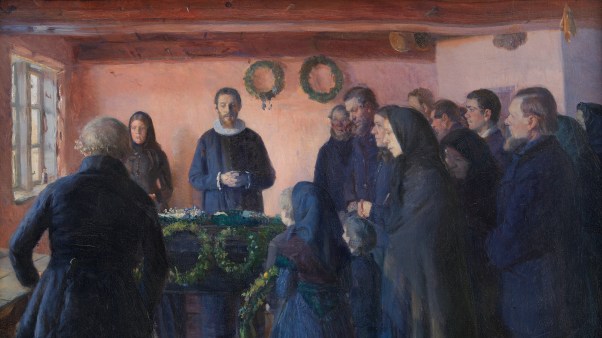“I don’t want to see the church split. I don’t want to see the church in anguish. However, I don’t want to see the church lose the Word of God.” That was how Edwin C. Weber, first vice president of the Lutheran Church-Missouri Synod, summed up the essence of the struggle that is tearing at the heart of the LCMS. He was addressing a recent meeting of 1,200 LCMS laymen in Minnesota.
Miles away in Omaha a man on the other side of the LCMS controversy was saying much the same thing at a meeting of the so-called moderates: “We don’t want to break away, and we don’t want a split in the church. There has been enough fragmentation.” But, continued Arthur C. Repp, the conservatives don’t seem to want to heal the breach; they want instead the exclusion of those who hold differing views of Scripture and those who favor a more open approach to church life. (Repp was theology professor and second in command at Concordia Seminary in St. Louis until February when he joined forty other professors and the majority of the students in a walkout to protest the suspension of Concordia president John Tietjen.)
The two statements reflect at least one common area of agreement throughout the LCMS: just about everybody is upset about the turmoil, and nobody really wants schism.
The turmoil is taking its toll. Last month Concordia’s acting president, Martin H. Scharlemann, 63, resigned because of physical and nervous exhaustion. He retains his position as a professor but is on a leave of absence. Vice President Robert Preus said he will take up the slack but not the post. A search committee was named by the seminary’s board of control to find a replacement, but it may be months before one is named. Few, if any, of the best qualified men would be willing to take the job right now; too much remains unresolved, and rebuilding will take at least four or five years. (A president cannot be appointed until the heresy and malfeasance charges against Tietjen are settled and he is out altogether.)
There are other casualties, among them some of the students at Seminex (short for “Seminary in Exile”), the school organized in St. Louis by the dissidents who left Concordia. Several first-year men said in interviews they were disillusioned by the fracas and intend to switch to another vocational pursuit after sticking out the year “for the sake of the cause.” LCMS president J. A. O. Preus says he’s confident that “the kids who have really sensed the call of God will return.”
Seminex is at the center of much of the misery in the Missouri Synod. Currently the matter of placement of the 125 Seminex seniors is of utmost importance. Under LCMS procedure the 46-member council of presidents (composed of the 40 LCMS district presidents, the LCMS president, and the five LCMS vice presidents) places or assigns ministerial candidates in response to calls from churches. But the council can place only those who have been certified by an LCMS seminary and board. A church that calls an uncertified man violates the LCMS bylaws and is subject to suspension of membership in the LCMS.
In a curious turnabout Seminex leaders and their backers in Evangelical Lutherans in Mission (ELIM), an organization of pastors and laymen identified with the pro-Tietjen or moderate position, dusted off an article in the LCMS constitution that seems to pit congregational autonomy against the LCMS bylaws. In short, the article states that no resolution imposing anything upon an individual congregation is binding if it is not in accord with Scripture or if it appears “inexpedient.” Therefore, suggested the Seminex appeal, a congregation can assert its autonomy and do what it deems scriptural and expedient in the matter of placement. (Some of the same moderate leaders in times past opposed such a stand when taken by conservatives.)
At any rate, the council has reportedly received nearly 150 calls, and there are less than 90 graduating seniors from Concordia, St. Louis, and Concordia, Springfield (Illinois), to fill them. The council gathered early this month to thrash out the issue. Also facing it was what to do about the placement of third-year men as “vicars” or interns. Seminex in March rejected the stipulation that interns are to be under the supervision of the LCMS board of higher education.
Meanwhile, a deep rift opened along another front last month. Dr. William H. Kohn, executive secretary of the LCMS mission board, resigned after months of hassling between the conservative-dominated mission board and most of the mission staffers. A week later four more staff executives resigned: William F. Bulle, secretary for medical missions; Mrs. Marion Kretzschmar, executive assistant for designated gifts; Walter H. Meyer, assistant executive secretary for North America; and James W. Mayer (he was dismissed in January as secretary for South Asia but had remained on staff). Two others said they would resign when they returned from trips: William F. Reinking, secretary for Asia and the Middle East, and Paul H. Spregy, secretary for East Asia.
Other resignations were threatened. Meyer told a rally audience that many of the 350 LCMS mission personnel around the world are lined up behind the moderates and that sixty-nine of the ninety LCMS headquarters staffers have protested the actions of the conservatives.
The missions squabble involves mostly issues of administrative policy and separatism. Some moderates believe President Preus is behind it all, but Preus told CHRISTIANITY TODAY he opposed the board’s firing of Mayer (which triggered a staff revolt in February and led to last month’s resignations). “I tried to handle it differently,” he said.
Executive Herman H. Koppelman, associate secretary for world missions, was named to replace Kohn.
Kohn indicated in a statement that dissidents may set up an independent mission board within the framework of ELIM. He called for the resignation of mission board chairman Waldo J. Werning and criticized the board’s alleged legalism, spirit of isolationism, and “unethical dealings with people.”
The split over missions is bound to add to the confusion in the churches, where many members are still trying to sort out the issues, and to detract from what Preus believes is the basic issue at stake: the inerrancy and authority of Scripture.
Other Lutheran bodies are being drawn into the fray. President Robert J. Marshall of the Lutheran Church in America and President David Preus of the American Lutheran Church both issued statements last month. Marshall said the LCA is not interested in proselytizing but would welcome congregations that may choose to leave the LCMS. In tracing the history of the LCMS dispute, he said the possibility of schism exists, and he pointed out that the LCA position would be closer to the moderates than the conservatives. David Preus in an interview said of the conflict: “This is not the witness the world needs today.” He called for “a moratorium on further divisive action” within the LCMS, suggesting there is room within the family for differences in theological approach.
Whatever, the suffering goes on: the uprooted lives, the uncertainties, the tensions, the suspicions, the frustrations, the hardships. And it is clear that the seeds of schism have not only been sown; they have already sprouted.
BIG CHURCH
With a membership under 150 and an average Sunday-morning attendance of 65, Jones Chapel United Methodist Church of Etowah, Tennessee, isn’t on anybody’s list of big churches. But it’s probably Number One as far as the neighbors are concerned. After a tornado struck the area last month, the church’s administrative board voted to donate the entire $2,800 sanctuary-renovation fund and the $1,100 Easter offering (which had been earmarked for the fund) toward replacing nearby homes that were destroyed in the storm.
Rebuilding
Church members are among the thousands of persons rebuilding on the shattered remains of life and property following last month’s devastating tornado strikes (see April 26 issue, page 39). Nowhere are the circumstances more difficult than in the small town of Xenia, Ohio, where at least six churches were destroyed and others severely damaged. Among those demolished was Xenia Missionary Church (its parsonage was also leveled, as were others). Three church leaders and several children of members were killed, and fourteen families lost everything.
Church services are being held in homes and in borrowed or rented halls. Some congregations with buildings intact are sharing their facilities with less fortunate ones (the independent Xenia Baptist Temple, for example, has moved in with a nearby Methodist church; services are held at separate times). An interfaith council formed to coordinate church relief efforts reported that offers to take in homeless congregations exceeded demands. The congregation of First United Methodist Church, whose property was destroyed, had recently merged with another congregation meeting in a newer building that was untouched by the storm; the tornado in a sense cemented the merger.
First Lutheran held its Palm Sunday and Easter services in members’ homes pending arrangements to hold future meetings at the YMCA. Pastor Jerry Volz disclosed a grim fact probably true in most cases: insurance coverage on the church property was not adequate to cover the cost of rebuilding at today’s inflated prices.
The personal wounds may be slow in healing. United Methodist minister Robert Meredith, a Xenia-area pastor who also serves as a hospital chaplain, told Religious News Service there may be lingering emotional and psychological sores. The initial shock over losses may be followed by feelings of guilt at having survived, depression, and anger.
Meanwhile, a number of church groups both locally and from across the nation have sent money, goods, and manpower to assist the stricken people of Xenia in their task of rebuilding.
Celebrities: The Difference
Celebrities have been making the religious news columns lately. Evangelical Newsletter, published by Eternity, reported a testimony by Mickey Rooney (“Since I accepted Christ as my Saviour, my life is altogether different”); Rooney credited a message by evangelist Billy Graham as the key in his conversion experience. (Rooney, known for his affiliation with the Church of Religious Science, is said to be attending an evangelical church now.) Reading the Living Bible in a hospital led to transformation of life for Jeannie C. Riley, the mini-skirted singer famous for her rendition of “Harper Valley PTA,” the newsletter noted. Joanne Pflug, who starred in M*A*S*H, was “reborn as a new Christian, baptized in Pat Boone’s pool, then married to a Jesus Freak,” it added.
A Dallas newspaper featured an account of the conversion of Bertha Louise “Lulu” Roman, formerly a star on the “Hee Haw” TV show. The show dismissed her after she was arrested a second time on narcotics charges. A hospital crisis involving her baby son led her to look to God, she told a reporter. Next she visited Southern Baptist pastor Howard Conatser and “prayed the sinner’s prayer.” She said the love and care “I got free” from members of Conatser’s church overwhelmed her. Court appearances are still ahead but she’s confident God will work out everything for good.
Former actress Betty Hutton, the star who married and divorced five times and went through an estimated $1.5 million, turned up recently as a cook and housekeeper at the rectory of St. Anthony’s Catholic Church in Portsmouth, Rhode Island. She told reporters she had been “down and out without a dime to my name” when she met a priest in Boston in February. He pointed her to St. Anthony’s. “I have found Christ at last,” she said. “I have studied the Bible all my life but always he eluded me. I found him here in this simple church.” (She had been baptized a Lutheran in 1958. In 1965 she and one of her former husbands, jazz trumpeter Pete Candoli, joined a Pentecostal church.)
Terror In Rhodesia
Guerrillas in Rhodesia last month killed Pastor Frank Kakunguwo, a leader of the Evangelical Church, and Richard Tsinokwadi, a lay administrator of a Christian high school in Mavuradonha. Kakunguwo was serving as chaplain of the 200-student school, a project of the Illinois-based Evangelical Alliance Mission, which founded the Evangelical Church of Rhodesia. The mission was forced to close the school following the murders when national workers, citing fear, refused to show up for work. (Earlier, the mission closed two “bush” stations because of terrorism.)
Wesleyan Wishing Well
Breakthroughs in two critical areas have sparked new optimism for the eventual merger of the Wesleyan and Free Methodist denominations. The two churches have been studying merger since 1970, when a joint Committee on Merger Exploration (COME) was formed.
Negotiations had bogged down somewhat over two issues: the inspiration of Scripture and control of denominational colleges. But both issues were successfully resolved—at least to the satisfaction of the twenty-six-member commission—during recent meetings in Winona Lake, Indiana. A proposed basis for merger was scheduled to be presented to a joint meeting of the two denominational boards this month. The issue will then go to the Free Methodist General Conference next month, and to the 1976 Wesleyan General Conference. A merging conference could be held in 1978. Proposed name for the united denomination: Wesleyan Evangelical Church.
The Wesleyan Church itself is the result of the merger in 1968 of the Pilgrim Holiness and Wesleyan Methodist denominations along with the Reformed Baptists of eastern Canada. At their merging conference the Wesleyans adopted a resolution calling for conversation with the Free Methodists. A corresponding resolution was approved by the Free Methodists a year later.
The question of biblical inerrancy nearly brought merger talks to a halt in 1972. While both Wesleyans and Free Methodists are committed to the full authority of Scripture, the Free Methodist Church has never attempted to define a specific view of inspiration. This was also true of the Pilgrim Holiness Church prior to merger. The Wesleyan Methodists, however, adopted a statement in 1923 affirming the inerrancy of the original biblical manuscripts, and inerrancy was affirmed in the 1968 Wesleyan Methodist-Pilgrim Holiness merger agreement. In the current talks between Wesleyans and Free Methodists, the Wesleyans insisted on a similar statement. Free Methodist commission members wanted a more generally worded statement, in keeping with their tradition.
PRESERVING THE EVIDENCE
Pastor John Varner of the Pentecostal Christian Fellowship Church in Keokuk, Iowa, looked up from prayer during a Friday evening service and saw two nude young men at the door, apparently intent on streaking in church. “Grab them,” Varner instructed. The men who grabbed the youths wouldn’t let them get dressed until police arrived and arrested them.
In the recent COME meetings, the stricter view apparently prevailed. The approved statement on the Scriptures reads, in part:
These Holy Scriptures are God’s true record, uniquely inspired by the Holy Spirit. They have been given without error and transmitted without corruption of any essential doctrine. They are the singularly authentic and authoritative revelation of God’s acts in creation, in history, in our salvation, and especially in His Son, Jesus Christ.
The other critical issue involved control of the ten educational institutions affiliated with the two groups. While Wesleyan schools are under ultimate denominational control, Free Methodist institutions are largely self-governing. Some Free Methodists have feared that a move toward denominational control would provoke such denominational schools as the 3,000-student Seattle Pacific College to go completely independent. COME members came to a compromise agreement on this issue. It provides for administrative coordination while maintaining the status quo in actual operations for the foreseeable future. They also agreed that the highest administrative office in the merged denominations will be “bishop,” maintaining Free Methodist practice.
Unsuccessful merger talks between Free and Wesleyan Methodists were held in 1907–15 and 1943–55. The latter attempt was broken off by the Wesleyans, in part over opposition to the use of the “bishop” title. In recent years the two denominations have drawn closer together and now collaborate in several areas. A Wesleyan was recently named executive director of both the Wesleyan and Free Methodist seminary foundations at Asbury Seminary in Kentucky, and a new joint hymnal is to be published soon.
If merger succeeds, the new denomination will have a total U. S. membership of 150,000 or so. While the Wesleyan Church (84,000 members) is now somewhat larger in U. S. membership, Free Methodists (65,000 members) have more than 70,000 overseas members, making the two groups roughly compatible in worldwide constituency.
Prospects for approval of the merger proposal at the approaching Free Methodist General Conference appear generally favorable. While Wesleyan approval in 1976 also is likely, opposition could emerge during the two-year interval. In addition to general conference approval, a two-thirds aggregate assent by the annual conferences (districts) of each denomination is also required. If union is approved, denominational officers elected in the 1974 and 1976 general conferences will hold office until the 1978 merging assembly.
HOWARD A. SNYDER
Holiness Themes: Heritage And Hope
New stirrings and vigor were evident as some 700 delegates gathered in Louisville, Kentucky, last month for the 106th annual Convention of the Christian Holiness Association (CHA). New chapters of the CHA and its associated theological society were announced in Canada, the Caribbean, the Orient, and elsewhere. New seminars on doctrine for reexpressing the holiness message are planned. There were reports of the existence of administrative position papers attempting to rethink the role of the association; these may surface at a future CHA meeting. In short, there are signs of a new and more aggressive stance despite increasing financial pressure (1973 CHA administrative income was $50,000, expenses $55,000).
With roots in a “National Campmeeting Association,” founded in 1867, the CHA is a remarkable amalgam of denominations, mission agencies (independent as well as denominational), camp meetings, educational institutions (about fifty), local associations, and other groups produced by the midnineteenth-century “holiness revival.” They have joined together for “cooperative ministries” such as publishing (joint Sunday-school materials), education, missions, and evangelism.
Member and cooperating denominations include nearly twenty groups, among them the Church of the Nazarene, the Salvation Army, the Free Methodist Church, the Wesleyan Church, and the Church of God (Anderson, Indiana), with a total membership of some two million. Many of these groups also belong to the National Association of Evangelicals (NAE), providing about one-third of the NAE’s denominational membership. CHA affiliates are distinguished from other NAE groups primarily by advocacy of the classical Methodist doctrine of “entire sanctification.”
The CHA annual meeting provides the occasion for evening rallies in classical camp-meeting style (special effort was made this year to restore that style of music), inspirational addresses (this year’s teacher was Nazarene Albert Lown of London), prayer services, study seminars, and the forging of interdenominational cooperation.
Afternoon sessions were devoted to “futurology.” One of the speakers, President Frank Stanger of Asbury Seminary, surveyed holiness eschatological views since Wesley. There is little uniformity. Just what the views of Wesley himself were is a matter of dispute. Holiness origins were dominated by postmillennialism conjoined with radical social reform. Latter generations were deeply influenced by premillennialism and the rise of prophecy conferences. Meanwhile, the Church of God (Anderson, Indiana) has been consistently amillennial since its founding in the 1880s. Stanger, setting a pace of restraint and toleration, underscored the biblical hope of Christ’s return but without detailed speculation.
Trends and concerns were perhaps more easily discerned in seminars. The two most popular of five programs were devoted to Pentecostalism and its growth. Though Pentecostalism is viewed by many as a sort of split within a general holiness persuasion, holiness leaders have been among the sharpest critics of the various factions of the tongues-speaking movements. While holiness reaction is still essentially negative and defensive, there is some evidence that bitter acrimony may be giving way to more open dialogue. Members of the CHA Wesleyan Theological Society recently attended and participated in the program of the newly formed Society for Pentecostal Studies. And holiness leaders and thinkers seem to be finally accepting the patrimony charge that the holiness movement fathered Pentecostalism.
The historic role of women in the holiness churches, where women have been ordained for over 100 years, was traced at a CHA women’s meeting. Early holiness origins had close associations with feminism, and such churches as the Nazarene and the Pilgrim Holiness have until recently had large contingents of women ministers. But this practice has largely vanished with increasing conformity to middle-class values by members of holiness bodies. Although the current president of the theological society is a woman, Mildred Bangs Wynkoop of Trevecca Nazarene College, there was not a woman among the sixty new CHA officers and committee members elected.
An emerging social commission brought together Roger Bowman, black director of outreach in the Church of the Nazarene, and Ronald J. Sider of Messiah College, organizer of the recent workshop that produced the so-called Chicago Declaration on evangelical social concern (see December 21, 1973, issue, page 38), to discuss alleged institutional racism. Current commission effort is focused on uncovering and refurbishing the significant history of holiness social concern (Wesleyans were strongly for abolition of slavery, Nazarenes were founded in part over the issue of missions to the inner city, the Salvation Army is one of the largest non-governmental social service agencies). The commission also engineered a convention resolution amounting to near endorsement of the Chicago Declaration (the only other CHA resolution called for preservation of income-tax deductions for charitable contributions).
Retiring president Bishop Henry Ginder of the Brethren in Christ Church was praised for using his term for significant consolidation. Leadership has passed to B. Edgar Johnson, general secretary of the Church of the Nazarene.
DONALD W. DAYTON
All In The Family
Increasingly, more evangelicals this decade than last seem bent on grappling with the big social and political issues of the day. Evidence last month: a conference on Christianity and politics, the second such conclave sponsored by the political science department of Calvin College, a Christian Reformed school in Grand Rapids, Michigan. The conference brought together 350 persons (110 were students) representing a variety of socio-political positions, from Anabaptist church-state separatists to some Reformed churchmen who come close to wanting a Christian political party, from the Post-American’s left-of-center Jim Wallis to Edward Rowe of Applied Christianity (formerly Christian Economics), who is miles right of Wallis. Yet despite their differing social and political views, all were theologically in the same family.
Most of the time was given to speeches (race, church lobbying, the institutional church, a historical survey of the attitudes of various church traditions toward social action), and they sparked little debate. Political science professor Rene Williamson of Louisiana State University stirred up the most reaction with his contention that the church should not endorse quota systems or get involved in stockholders’ actions as a way of pressing for social change. Williamson, a Southern Presbyterian who says he approves church involvement in certain areas of socio-political action, described much current denominational activity as “irresponsible.”
Chicago pastor William Bentley, president of the National Black Evangelical Association, castigated the predominantly white male audience for a weak record on the race issue.
In the opinion of some female participants, the absence of a platform representative for the women’s issue suggested even more loudly how little evangelicals have done in eliminating sexual discrimination.
The two-day meeting was organized by Professor Paul Henry of Calvin and funded in part by Living Bible publisher Ken Taylor’s Tyndale Foundation, which last fall also provided money for the conference that produced the so-called Chicago Declaration of evangelical social concern.










